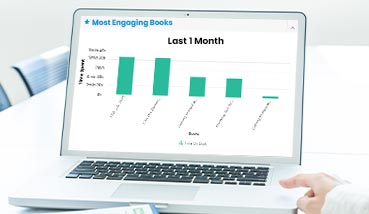One of the most disruptive school years in history drew to a close with students still attending online classes. As schools and households prepare for a new academic year, some trends are expected to continue. The digital acceleration that happened in classrooms over the past year will set a new baseline for tech integration in 2021-22. For starters, parents and students now favor remote or hybrid learning to stay safe from the coronavirus. In Deloitte’s Back to School Survey, more than 50% of respondents stated that they planned to spend on tech products for learning, driving the sales of digital learning tools up 37% YoY.
The uniquely challenging year for students and educators is likely to leave an indelible mark on the education system. With the increased use of technology in the classroom, there is now a higher need for actionable learning analytics for pedagogical purposes. This spells incredible opportunities to resolve issues rising out of the pandemic-induced disruption.
The Global Pandemic Has Led to Widespread Learning Loss
Blended or hybrid learning has redefined the student experience and has offered educators the vital tools to ensure continuity of education. Although education was delivered, there are still the long-term aftermath of this intensely challenging period to be considered.
One aspect to look at is the cumulative impact of learning losses. For instance, according to a report, students were on average 4 months behind in reading, and 5 months behind in math by the end of the 2020-21 academic year. The reasons for these losses range from socio-economic factors to specific learning needs that might have remained unmet. The pandemic exacerbated inequalities in the education system. Not every child had access to efficient devices and high-speed internet, fuelling chronic absenteeism.
Many low-income households couldn’t afford education for their children amidst job losses and furloughs. Public school enrollment in the US declined 3% in 2020-21, the highest in a century. A significant number of parents have expressed concerns over the mental well-being of their children. It should also be remembered that many students will return to the classroom this fall, having lost their caregivers, friends, or family members in the pandemic.
Going forward, as schools seek new ways to extend and scale the digital transformation efforts, the demand for inclusive, flexible, and intelligent technologies will grow. Learning analytics play a crucial role in guiding the direction of technology-fuelled, post-pandemic classrooms, to help teachers address these losses adequately.
How Learning Analytics Can Improve Learning Outcomes
Now, as students, parents, and educators have seen both the pros and cons of online learning, they are looking to provide customized learning experiences that help students prepare for a brighter future, despite setbacks. Data analytics can help them create these personalized learning pathways. So far, data analysis has been ad-hoc, inaccurate, and incomplete. But, with the advent of digital learning platforms, and the integration of technologies like AI and machine learning, huge quantities of relevant student data can be collated and analyzed effectively and accurately to provide actionable insights.
1. Learning Analytics Can Help Evaluate Learning Progress
Data-driven insights can help teachers spot both strengths and weaknesses of individual students, and for specific subjects. This can then help them modify their teaching strategies accordingly. It can also help them identify which content format leads to the best learning outcomes. Using multimedia, accessible and inclusive EdTech resources, teachers can ensure maximum engagement and retention.
For instance, the integration of interactive and multimedia elements can help create engaging math lessons. With the use of animation and video lessons, tough math concepts can be made easier to understand, suitable for children lagging in math skills.
2. Identifying Risks of Dropouts and Absenteeism
A predictive model of data analytics uses real-time information of students to guarantee success. Using data, institutions and district-level administrators can identify students who are at risk of dropping out, or failures that might lead them to consider dropping out. They can then plan intervention steps to deal with these issues.
For instance, learning analytics can apply statistical models and machine learning tools for predictive analytics of student performance. At-risk students can be given targeted support, through personalized lessons that match their pace of learning and specific needs. Personalized interventions, such as counseling or financial help, can also be planned, to try and help retain these students.
3. More Scope for Educators to Create Successful Strategies
In this new educational environment, teachers need all the tools they can get to best serve students. With learning analytics, they will be able to detect learning patterns and efficacy rates more rapidly. This is crucial when students are already facing learning losses due to the pandemic.
In this setup, teachers will be expected to develop critical thinking tools and collaborative interactions, rather than simply delivering lectures. This will not only help create well-rounded, inquisitive, and aware citizens, but also help students express their feelings about the challenges they faced during the pandemic or continue to face.
4. Sharing Student Reports with Parents and Administrators
Learning analytics platforms can enable teachers and institutions to share student reports with parents, district leaders, and other stakeholders. This can be useful in many ways. For instance, securing funding for various resource needs, based on learning outcomes in a particular community.
The pandemic has led to the problem of “unfinished learning,” which if left unchecked can lead to a generational catastrophe. MagicBox™ aims at providing tech-driven, inclusive, and accessible digital learning experiences that also provides deep analytical insights into the opportunities and threats that haunt the future classroom. It is a platform that gives your curriculum a competitive edge.
Want to know more about MagicBox™ and what it offers for schools, students and educational publishers? Contact us today.













